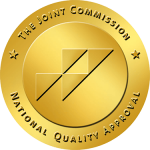
Intensive Outpatient Programs
Joint Commission Accredited Addiction Treatment
IOP Program at Nextep
Our Intensive Outpatient Program at The Nextep includes a daily schedule that begins at 9:00 am and ends around 12:00 pm. Clients will attend morning group therapy sessions, process groups, individual therapy and experiential therapy sessions. IOP is used as a level of care that is below Partial Hospitalization, but above regular Outpatient. Where a PHP program would provide more therapeutic hours, IOP offers approximately half the amount of hours of therapy – but coupled with the opportunity for the individual to live away from the clinical offices. Often times the client will live in a structured recovery residence while attending IOP. This type of care provides for a very affordable and effective treatment plan for most clients who are on the path to step down in levels of care.
What Is An Intensive Outpatient Program?
The go-it-alone approach to addiction resolution seldom if ever works. It’s simply too difficult for an addict to establish a solid recovery without professional addiction treatment personnel getting involved. We see it all the time. Patients enter our facility asking for our help because nothing else seems to work. There’s a reason for that. As professionals, we know what type of treatment program is going to give each patient the best chance for recovery.
A Little About ASAM Dimensions
To establish a general treatment consensus throughout the addiction treatment industry, a number of top treatment centers, ours included, subscribe to the ASAM levels of care approach to assigning treatment options. The ASAM scale uses six dimensions to help counselors and clinicians decide exactly what level of care a patient is going to need.
These six dimensions look at almost every aspect of a person’s life and the addiction they carry as an anchor in their life. These aspects include looking at physical and mental health issues, environmental influences and recent behaviors. By throwing all of these things into one evaluation bucket, a counselor or clinician will get a good sense of the individual and what type or types of addiction treatment options and modalities should be most effective. From there, it’s just a matter of designing a custom treatment plan and implementing it.
Levels of Care
With a proper evaluation, patients stand to get the kind of treatment program they need. From least to most invasive, here’s a list of the basic levels of care:
- Outpatient services – appointment driven, few hours a week
- Intensive outpatient services – appointment driven over 3-4 hours a day in the outpatient facility
- Partial hospitalization with outpatient followup – time spent in inpatient facility allows patient to stabilize before moving to one of the outpatient options
- Resident inpatient treatment – living in-house with amenities for 30-90 days
- Long-term medically monitored residential treatment – At least 90 days in treatment under a doctor’s care. Could include the use of tapering drugs like Methadone
In most cases, patients will be placed exactly where the treatment staff feels they belong. However, there could be extenuating circumstances that might create a need to use another treatment level option.
While many patients need residential care, there are some that cannot afford such care. There are others who have life circumstances that make it difficult to commit to any form of inpatient care. Under these circumstances, outpatient or intensive outpatient options get preference. Both of these option are less invasive and more affordable.
At all times, the treatment focus has to be put on creating the best possible environment to help the patient find recovery.
Information about Intensive Outpatient Care
When a patient is able to enter treatment without having to participate in a detox program, they might be best suited for an intensive outpatient program if they still have substantial addiction issues to address. This is based on the notion the addiction has not completely consumed the individual’s body and soul.
A basic outpatient program simply requires the patient to show up for counseling sessions as scheduled. The patient will likely go through individual counseling and participate in a few group session. From a time standpoint, they might spend 2-3 hours a day, 3-4 times a week. With good progress, the schedule will likely be adjusted to something that requires less time.
An intensive outpatient program is like a basic program on steroids. The patient will generally be required to spend between 6-10 hours a day, everyday, until progress is evident. During their time in the facility, the patient will go through intensive individual therapy sessions and group therapy with other patients in similar circumstances.
In both types of outpatient programs, the patient has to meet their responsibilities with zero-tolerance for failure. While an intensive outpatient program allows the patient to address outside responsibilities like family, work and school, they are closely monitored to make sure they are making the necessary progress. Anything short of expectations could have the patient being recommended for transfer into a residential treatment program. At the end of the day, responsible patients are rewarded with the least invasive addiction treatment programs available.
You don’t have to live your life caught up in the cycle of addiction. The path to a better way of living goes right through one of our treatment programs. For more information, please feel free to contact one of our professional staff members for a rundown of our services.
We Accept Most Major Health Insurance Including:

